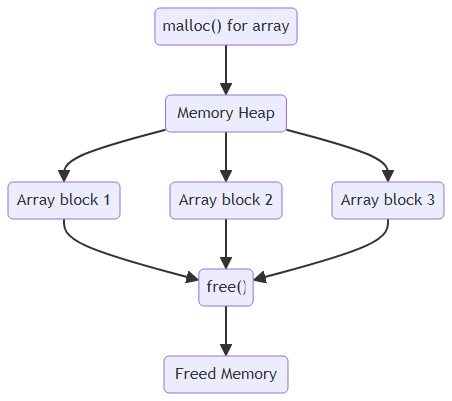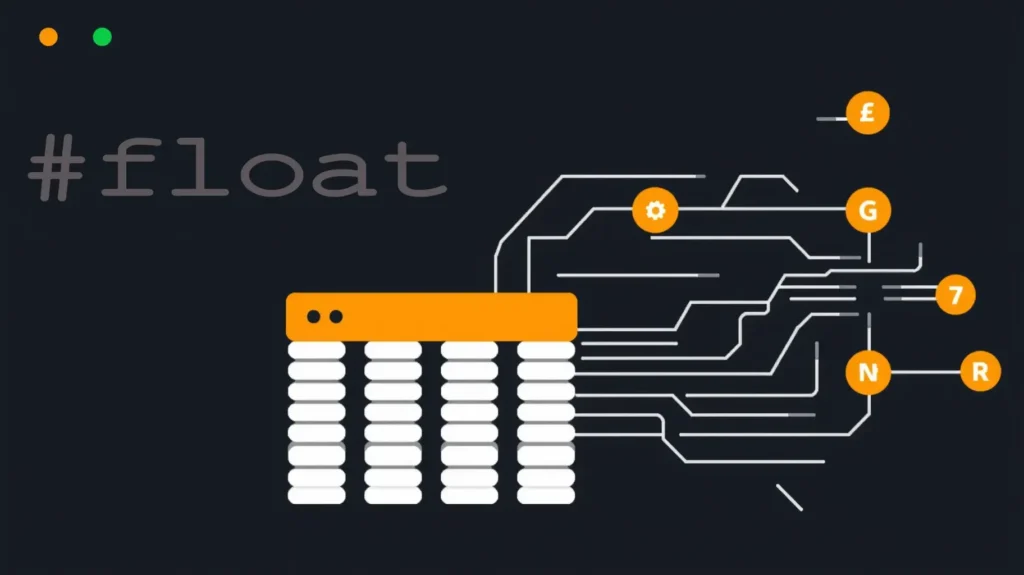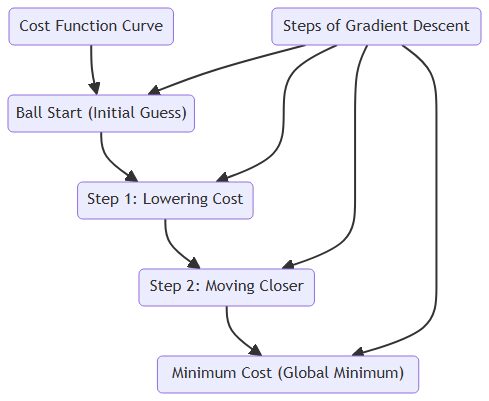
Most tutorials focus on Python or R, but what if you’re a fan of C? While it’s not the first language that comes to mind for machine learning, it’s highly efficient, giving you full control over memory and performance. And once you get the hang of it, you’ll see that machine learning in C is more than possible—it can even be exhilarating!
In this guide, we’ll break down everything you need to know about using C for machine learning, with clear examples and explanations along the way. Ready to dive in? Let’s get started!
Why Use C for Machine Learning?
So why would anyone want to use C when Python or R have so many libraries and frameworks designed specifically for machine learning? The answer lies in control and performance. With C, you’re not relying on layers of abstraction—you have direct access to the hardware, which means you can create highly efficient and optimized machine learning algorithms.
Plus, there are times when Python just isn’t fast enough. In resource-constrained environments or when working with massive datasets, C can deliver lightning-fast performance that’s hard to match. Once you learn the ropes, implementing machine learning algorithms in C can give you a deep understanding of what’s happening under the hood.
Understanding the Fundamentals of Machine Learning
Before we even touch a line of C code, let’s quickly go over the core concepts of machine learning. In essence, machine learning is about creating algorithms that can learn from data. These algorithms typically fall into two categories: supervised and unsupervised learning.
- Supervised learning involves feeding an algorithm labeled data, helping it make predictions. Think of it like teaching a computer to recognize cats in photos.
- Unsupervised learning deals with unlabeled data, finding hidden patterns without explicit instructions. This could be used for things like customer segmentation.
The key takeaway is that most machine learning algorithms boil down to mathematical models. And in C, we’ll be building these models from the ground up!
Linear Algebra in C: The Backbone of ML Algorithms
If you’re serious about machine learning in C, you need to master linear algebra. Concepts like matrices, vectors, and dot products form the backbone of most machine learning algorithms.
Luckily, these can be implemented with simple data structures in C. Let’s start by creating a 2D array (or matrix) in C:
float matrix[3][3] = {{1, 2, 3}, {4, 5, 6}, {7, 8, 9}};
This is a simple 3×3 matrix, but you can easily scale this to handle more complex operations. Understanding how to manipulate matrices, perform matrix multiplication, and solve systems of linear equations in C is crucial for writing algorithms like linear regression or support vector machines (SVMs).

Implementing Basic Data Structures in C
In machine learning, data is everything. To build your own ML algorithms in C, you’ll need to implement key data structures that hold and manipulate this data. Arrays, structs, and linked lists will become your best friends.
Here’s a quick example of defining a struct to represent a data point:

struct DataPoint {
float x;
float y;
};
You can then create an array of these structs to hold your dataset, and implement functions to manipulate them, like sorting or scaling. Once you have a solid handle on basic data structures, you’re well on your way to creating machine learning models.
Handling Large Datasets in C Efficiently
Efficiency is the name of the game when handling large datasets in C. Unlike higher-level languages, in C, you’ll have to manage memory manually. This can be both a blessing and a curse: while it gives you complete control, it can also lead to bugs if you’re not careful.
One of the best ways to handle large datasets is by using dynamic memory allocation with functions like malloc() and calloc(). This allows you to allocate memory on the fly, ensuring you’re not wasting precious resources. Here’s an example of dynamically allocating memory for an array of data points:
struct DataPoint* dataset = (struct DataPoint*)malloc(1000 * sizeof(struct DataPoint));
Once you’ve allocated the memory, you can fill the array with data, process it, and then free the memory once you’re done using free() to prevent memory leaks. Proper memory management is critical when working with large datasets, so always keep a close eye on it!

Key Libraries for Machine Learning in C

You might think that building machine learning models in C would require creating everything from scratch, but fortunately, several libraries can make your life easier. While C lacks the extensive machine learning frameworks of Python, it still has a few key libraries that can speed up development:
- GNU Scientific Library (GSL): A highly versatile library for scientific computing, offering a wide range of mathematical functions, including linear algebra, random number generation, and more. It’s perfect for building the mathematical foundations of your machine learning algorithms.
- OpenBLAS or LAPACK: These libraries are specifically designed for high-performance linear algebra operations, and they are optimized to work well with large datasets.
- LIBSVM: If you’re working on support vector machines, LIBSVM is a great, lightweight library that can help you implement SVMs in C with ease.
Using these libraries means that you can focus on implementing the actual machine learning logic, rather than re-inventing the wheel when it comes to low-level math functions.
Implementing a Simple Regression Model in C
Let’s jump into some real-world coding! One of the simplest machine learning models is linear regression. In this example, we’ll create a basic linear regression model in C that predicts a continuous value based on input features.

Here’s a simple outline of how you can implement linear regression in C:
- Start by creating a dataset with input variables (x) and output (y).
- Implement a function to calculate the mean and variance of the input data.
- Write a function that calculates the slope (m) and intercept (b) of the best-fit line using the formula:

- Finally, use the model to predict new values by plugging in your input to the linear equation y=mx+by = mx + by=mx+b.
Here’s a quick code snippet to get you started with finding the slope and intercept:
float calculate_slope(float x[], float y[], int n) {
float mean_x = mean(x, n);
float mean_y = mean(y, n);
float numerator = 0.0;
float denominator = 0.0;
for (int i = 0; i < n; i++) {
numerator += (x[i] - mean_x) * (y[i] - mean_y);
denominator += (x[i] - mean_x) * (x[i] - mean_x);
}
return numerator / denominator;
}
float calculate_intercept(float x[], float y[], int n, float slope) {
float mean_x = mean(x, n);
float mean_y = mean(y, n);
return mean_y - slope * mean_x;
}
With this code, you can build a basic regression model to predict outcomes based on input data. It’s a simple example, but it’s the core of more complex models like polynomial regression and logistic regression.
Memory Management in C: Critical for ML Performance
One of the trickiest parts of working with C is managing memory effectively. In machine learning, memory leaks or poor memory management can lead to performance bottlenecks or even crashes, especially when working with large datasets.
Dynamic memory allocation is often used in C to allocate memory on the heap. For example, when working with arrays or matrices that need to grow dynamically, you’ll rely on malloc() and free() functions.
Here’s an example of allocating and freeing memory for a dynamic array of floats:
float* data = (float*)malloc(1000 * sizeof(float));
if (data == NULL) {
printf("Memory allocation failed!");
return 1;
}
// After using the data, free the memory
free(data);
Memory fragmentation is another potential issue in large-scale machine learning projects in C. To mitigate this, always try to use contiguous memory blocks and avoid frequent memory allocations. Reusing memory buffers can also improve performance.
Training a Neural Network from Scratch in C
Let’s take things up a notch: neural networks. Implementing a neural network from scratch in C is challenging but incredibly rewarding. At its core, a neural network consists of layers of neurons, where each neuron is connected to others in the next layer through weighted edges.

Here’s a simplified version of how you can implement a feedforward neural network:
- Initialize weights and biases: Start by initializing random weights and biases for the neurons in the network.
- Forward propagation: For each input, multiply it by the corresponding weights, sum the results, and apply an activation function (like the sigmoid function) to introduce non-linearity.
- Backpropagation: Compute the error for each output and adjust the weights to minimize this error using gradient descent.

Below is a basic example of forward propagation for a single neuron:
float sigmoid(float x) {
return 1 / (1 + exp(-x));
}
float forward(float weights[], float inputs[], int num_inputs) {
float sum = 0;
for (int i = 0; i < num_inputs; i++) {
sum += weights[i] * inputs[i];
}
return sigmoid(sum);
}
This is just a tiny piece of the puzzle, but it’s enough to demonstrate the concept. Once you implement forward and backward propagation, you can train the network on a dataset to make predictions.
Common Pitfalls When Using C for Machine Learning
While C can be incredibly powerful, there are several pitfalls to watch out for when applying it to machine learning:
- Memory leaks: Always remember to free dynamically allocated memory.
- Performance bottlenecks: Without optimization, C code can run into performance issues, especially with complex algorithms.
- Lack of built-in libraries: Unlike Python, C doesn’t come with extensive libraries like TensorFlow or Scikit-learn, so you’ll often find yourself writing a lot of boilerplate code.
To avoid these issues, use profiling tools like gprof to analyze where your program is spending time, and always ensure that your memory usage is efficient.
Performance Optimization Tips for Machine Learning in C

When working with machine learning algorithms in C, performance optimization becomes crucial, especially for large datasets and complex models. C offers many tools to help you speed things up. Here are some tips for optimizing your C-based ML algorithms:
- Use efficient data structures: Choose the right data structures like arrays and structs. Keep data in contiguous memory for faster access. Avoid pointers unless absolutely necessary, as they can introduce overhead.
- Minimize function calls: While function calls keep your code clean, they can slow things down. Inline functions where possible, especially in loops that run thousands of iterations.
- Leverage compiler optimizations: Modern compilers like GCC provide optimization flags. The
-O3flag aggressively optimizes the code to run faster. Experiment with different levels like-O1or-O2to find the right balance between performance and compile time. - Parallelize computations: Machine learning tasks often involve large-scale matrix operations. OpenMP can help you parallelize these tasks on multicore systems. Here’s a simple way to parallelize a loop:
#pragma omp parallel for for (int i = 0; i < n; i++) { result[i] = data[i] * weight; } - Profile your code: Use tools like gprof or valgrind to analyze the performance of your code. These tools can show you which parts of your program are taking the most time, allowing you to focus optimization efforts where it matters most.
Leveraging External Libraries to Speed Up Your Code
While C doesn’t come with many built-in machine learning libraries, several external libraries can significantly speed up your development process. These libraries not only help with faster computations but also save you from writing complex functions from scratch.
- BLAS (Basic Linear Algebra Subprograms): A widely used library for linear algebra operations like matrix multiplication. Libraries such as OpenBLAS and Intel MKL are optimized versions of BLAS and can drastically speed up your linear algebra calculations.
- FFTW (Fastest Fourier Transform in the West): If your machine learning algorithm involves signal processing or Fourier transforms, FFTW is the go-to library. It’s highly optimized for speed and can handle multi-dimensional arrays.
- Eigen: While Eigen is primarily a C++ library, it can be used with C for matrix and vector operations. It’s lightweight and offers a clean API for matrix manipulations, making your code both faster and easier to read.
- Armadillo: Another C++ library, Armadillo simplifies linear algebra in C/C++ and can work as a backend for C programs, especially when dealing with complex ML algorithms.
By incorporating these libraries into your machine learning workflows, you can focus more on the logic of your models rather than implementing complex math operations from scratch.
Debugging and Testing Machine Learning Models in C
Debugging machine learning code written in C can be tricky, but with the right approach, you can identify issues quickly. Here’s how you can make debugging a smoother process:
- Use GDB: The GNU Debugger (GDB) is an essential tool for debugging C programs. It allows you to step through your code, inspect variables, and identify where things go wrong. If your ML model isn’t behaving as expected, use GDB to see where the logic breaks down.
- Check for memory leaks: Valgrind is a great tool to detect memory issues. In C, memory leaks can be subtle and difficult to catch without proper tools. Always use Valgrind to ensure you’re freeing up memory where necessary.
- Unit testing: Writing unit tests for individual components of your machine learning model can save you a lot of headaches. Test functions that handle data preprocessing, matrix operations, and prediction logic separately. Libraries like CUnit or Check can help you set up a testing environment.
- Test with known data: Run your model with a small dataset that you know the expected outcome for. This can help you verify that the model is functioning correctly before scaling up to larger datasets.

- Log key variables: Since debugging C is a bit more complex than higher-level languages, it helps to log key variables, especially in iterative processes like training loops. This gives you insight into what’s happening at each step without needing to halt the program every time.
Best Practices for C Programming in Machine Learning
When implementing machine learning algorithms in C, adhering to best practices can save you time, effort, and potential errors down the road. Below are some tried and tested practices to follow:
- Keep code modular: Break your code into reusable functions for tasks like data preprocessing, model training, and evaluation. This not only makes debugging easier but also helps you reuse code for different projects.
- Comment thoroughly: Machine learning algorithms can get complex quickly, especially in C where you’re implementing many low-level operations. Always comment your code, explaining why certain decisions are made, especially for mathematical operations.
- Manage memory carefully: Always keep track of dynamically allocated memory. Every
malloc()should have a correspondingfree()to avoid memory leaks. Use tools like Valgrind regularly to ensure clean memory management. - Optimize where needed: As mentioned earlier, use profiling tools like gprof to understand where your code spends the most time. Don’t optimize prematurely; focus on the bottlenecks identified during profiling.
- Stay updated: Machine learning is a fast-evolving field. While C isn’t the most common language for ML, keeping up with new libraries, techniques, and hardware optimizations will ensure your code remains efficient and effective.
Future-Proofing Your Machine Learning Projects in C
C may not be the first language that comes to mind for machine learning, but if you’re committed to it, there are ways to ensure your projects remain relevant and scalable in the future.
- Follow hardware trends: Machine learning is increasingly tied to hardware advancements. Keep an eye on developments in GPUs and TPUs, and learn how to leverage GPU-accelerated libraries that interface with C, like CUDA or OpenCL.
- Use cross-platform libraries: Ensure your C code can run on different platforms (Windows, Linux, Mac). By using cross-platform libraries like OpenBLAS, you can make sure your models can be deployed across various environments without needing extensive rewrites.
- Modular design: Build your ML code in a way that allows you to swap out components easily. For instance, if you’re using a simple matrix multiplication function now, you can later replace it with a more optimized version from a library like OpenBLAS without major rewrites.
- Keep an eye on C++: While C is incredibly powerful, some aspects of machine learning might be easier to manage in C++, especially when it comes to object-oriented features and larger libraries. Consider transitioning parts of your code to C++ when necessary, or even mixing C and C++ for a more flexible codebase.
Real-World Use Cases of Machine Learning in C
Even though C isn’t the most popular language for machine learning, there are several real-world use cases where its speed and low-level access to hardware make it ideal:
- Embedded systems: In embedded systems, where computational power and memory are limited, C’s efficiency makes it an excellent choice for running lightweight machine learning models.
- robotics: In robotics, real-time decision-making is crucial. C is often used to write low-latency machine learning models that control robots’ actions in response to sensor data.
- High-frequency trading: In finance, high-frequency trading algorithms need to process vast amounts of data in milliseconds. C’s speed makes it the go-to language for building machine learning models that predict market trends and execute trades rapidly.
- Autonomous vehicles: Some parts of autonomous vehicle systems use C for critical tasks like real-time object detection and path planning, where high performance and reliability are non-negotiable.
By learning machine learning in C, you open the door to a world of high-performance computing, giving you an edge in environments where speed and control matter most.
Resources for Learning Machine Learning in C
- Books:
- “Machine Learning Algorithms” by Giuseppe Bonaccorso: While it focuses more on the conceptual side, this book provides a strong foundation for understanding ML algorithms, which you can implement in C.
- “Data Structures and Algorithms in C” by Adam Drozdek: Essential for mastering the data structures you’ll use in machine learning projects.
- “Numerical Recipes in C: The Art of Scientific Computing” by William H. Press: A must-read for anyone serious about scientific computing and optimization in C, especially for machine learning tasks.
- Online Tutorials & Courses:
- Coursera’s Machine Learning by Andrew Ng: This course focuses on Python/Octave, but the underlying principles can be translated into C.
- GeeksforGeeks C Programming: A comprehensive source for refreshing C programming basics, especially dynamic memory allocation and data structures.
- TutorialsPoint C Machine Learning Guide: Offers practical, example-driven tutorials on machine learning implementations in C.
- Libraries and Tools:
- GNU Scientific Library (GSL): Provides a wide range of mathematical tools to aid in building machine learning algorithms.
- OpenBLAS: A high-performance library for basic linear algebra operations.
- LIBSVM: A library specifically designed for Support Vector Machines in C.
- Eigen: A C++ library that works with C for matrix operations, often used in machine learning.
- Communities:
- Stack Overflow: An excellent resource for troubleshooting issues in your machine learning code, especially with C-specific implementations.
- Reddit’s C Programming Community: Discuss C-specific issues, optimizations, and best practices.
- GitHub Repositories: Browse open-source machine learning projects written in C to learn from existing code.
- Check out repositories like c-dnn, a lightweight deep learning framework written in C.
- Research Papers:
- “Efficient Backprop” by Yann LeCun: This classic paper covers backpropagation algorithms, which are essential for understanding neural networks. You can use these insights to implement in C.
- “Support Vector Machines” by Vladimir Vapnik: Fundamental for anyone implementing SVMs from scratch, even in C.